Friday, so what could be better than some Barbara Jones birds, even if they are a bit grubby round the edges.
Todays flock are pretty self-explanatory, playing in another lovely BBC Schools booklet of songs and music for children. (I have actually mentioned these before, but now a copy is in my own hands, so you get to see it again).
Along with the songs ,there are further Barbara Jones drawings inside. These are in a much freer style, but still with her trademark exccentricity.
Mind you, the songs invite it. The illustration above is for a traditional folk song called Green Broom which – as you might guess from the illustration – is pretty much a pagan welcome to spring. While the young man worrying about his hair below goes with Benjamin Britten’s setting of Begone Dull Care.
Also in there are bits of Schubert and Grieg, along with Victorian ballads and Norwegian folk songs. It’s almost as though Barbara Jones has had a hand in the selection process too.
The birds came as part of a selection box of these leaflets, all from the 1950s. They’re all interesting, but a couple of them particularly so. Summer 1954 was done by Derrick Hass.
We’ve discussed him on here before (see the comments too for some memories of him) but he’s worth mentioning again in the context of what designers went on to do in the 1960s and beyond. The prevailing story is that the rise of the all-in advertising agency put paid to the old-style poster designer: a few – like Eckersley and Games – carried on, some like Henrion and Pick formed corporate identity consultancies, and who knows what happened to the rest. But Derrick Hass bucked the trend by not only going into agency work but becoming an enormously successful and respected creative director who worked and won awards right up until retirement age, forty years after he did these.
That’s quite an achievement.
Meanwhile I just like this Heather Lacey illustration, perhaps because it reminds me of illustrations in Puffin books.
I can find nothing out about her at all, mainly because half of the internet seems to be called Heather Lacey. If anyone knows more, please let me know.
These booklets, taken all together, were quite an achievement. Every term, a school would get a new set of illustrations along with their music, perhaps not all of as wonderful as the ones I have chosen but certainly all good. I’ve said it before but I’m quite happy to say it again; I’d love it if I thought my daughter was being exposed to both music and illustration of this quality in her primary school lessons. But I’m pretty sure she isn’t, and that’s a profound loss.
We’ve grown used to seeing this kind of top-down culture (this is great art, you must know about it and I am right) as being elitist, discriminatory and rife with snobbery. We don’t believe any more that the BBC or indeed any kind of media should be exposing us to high art, rather that they should be giving us what we want. There is some truth in all of this, and in any case we can’t turn the clock back. But we should also remember that sometimes, just sometimes, the result was profoundly democratic, and particularly so in things like these booklets where the art just arrives without any comment. All children should be given the chance to see and hear illustrations and music like this. They don’t have to like them – and we shouldn’t think any the less of them if they don’t. But if we just give them photocopied sheets of popular songs, we are taking away from them the chance of knowing these things exist. And for a few children that might be the chance of knowing who or what they wanted to become.
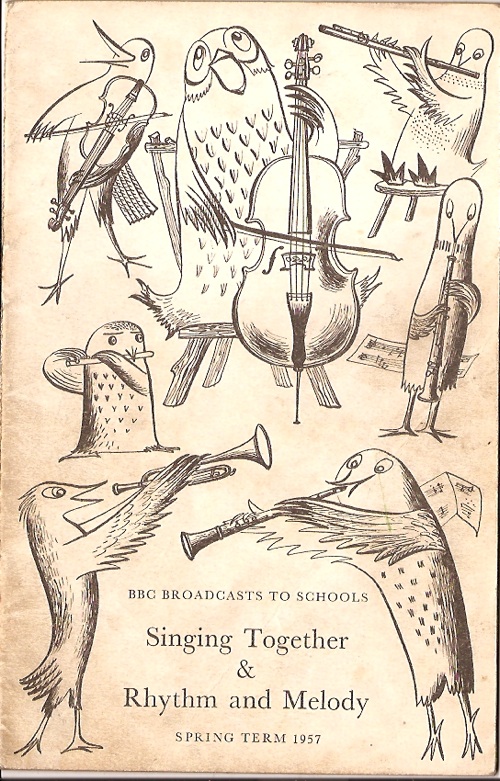
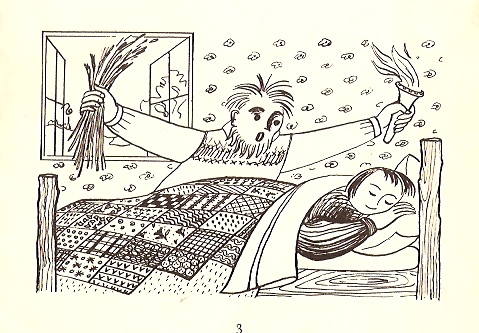
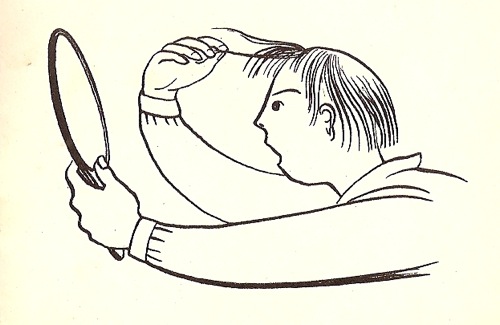
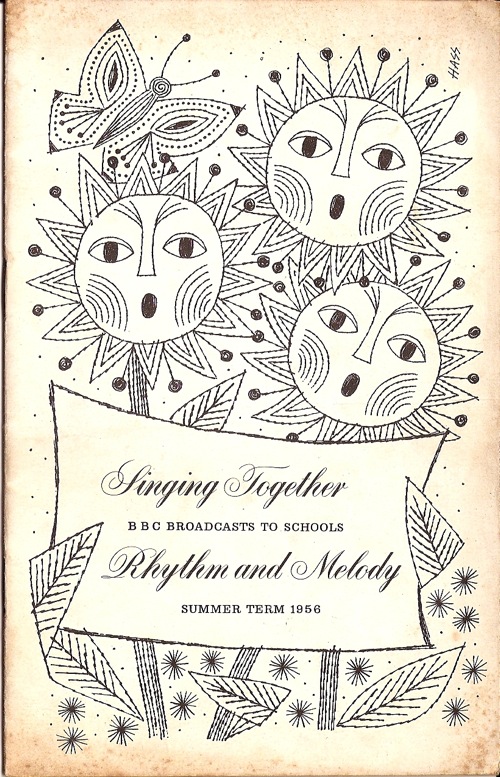
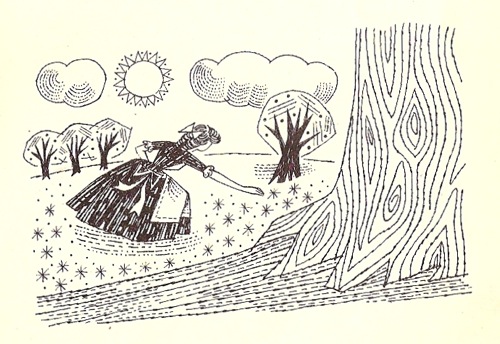
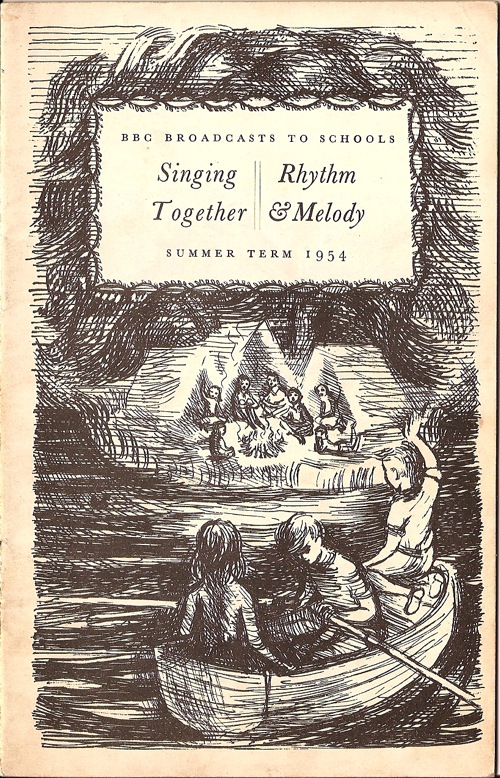
I couldn’t agree more with your last comments. John Walters, John Peel’s radio producer, once said the role of the BBC was not just to give people what they want but what they didn’t even know they wanted. It should be the same with schools. I grew up with fabulous Shell posters in the classroom which made a lasting impression on me. Now my own children are faced with photos instead of illustration and garish colours replacing subtlety. In trying, with entirely justifiable motives, to be more inclusive it actually ends up just being patronising
John Walters was spot on there.
The classrooms are just the same in my daughter’s school, and this is one that has won awards for its arts provision. If only a small part of the effort that was put into books and reading could go into visual literacy as well.
It’s not just the quality of the art that has changed in the classroom: two of the songs which the BBC taught me in the first half of the 1950’s were, in addition to the indisputably cultivated ‘Who is Sylvia, What is She” were ‘There is a Tavern in the Town’ and ‘Soldier Soldier Won’t You Marry Me’ neither of which would be acceptable nowadays. I can’t remember the illustrations to either song clearly but I suspect they depicted the women as being merry but drippy.
On a very minor point, which only the most saddest and most nerdy of sub-editors would notice, I think that 1954 should read 1956 in paragraph 6 – that it’s if the reference is to the booklet printed below which I assume that it is. Woe is me that I should even bother about such things.
And even more woeful is the sub-editor who fails to notice his own mistakes which you will have spotted with ease.
A question… Would the school children have got to see these booklets and illustrations or were they just supplied to the teachers?
Nerdy sub-editing is always welcome here: duly corrected!
And I’m pretty sure the booklets were distributed to children. Certainly I posted a much later set a while ago, and very definitely remembered some of the illustrations from one booklet. I think our school had saved them and were just using them as singing books. I suspect if they were just doling them out to teachers they might not have bothered with the illustrations.
We had to take 6d to pay for our Singing Together/ Rhythm and Melody booklet each term, but then they were ours to colour and keep, forever!
Now that sounds like fun.